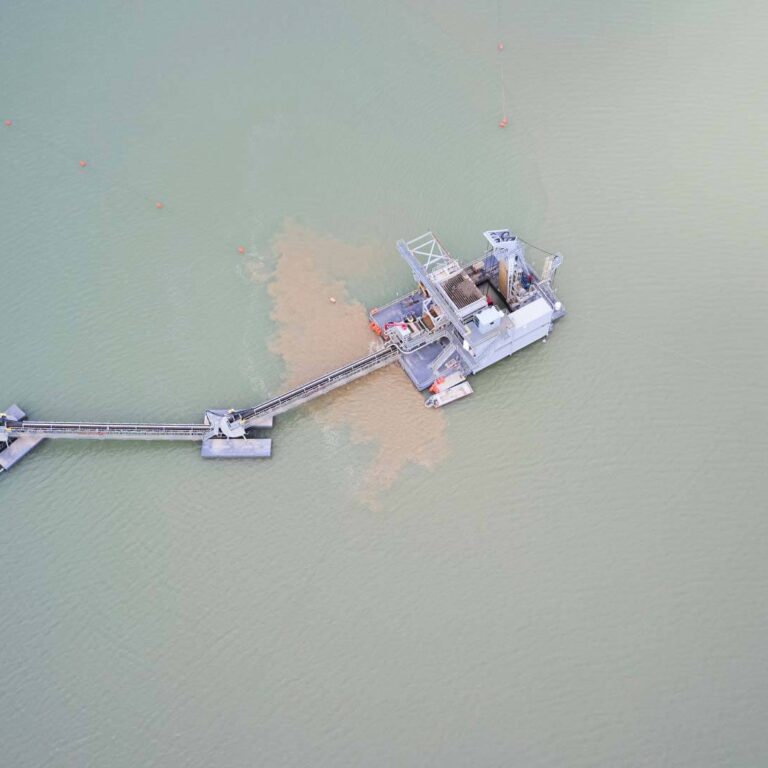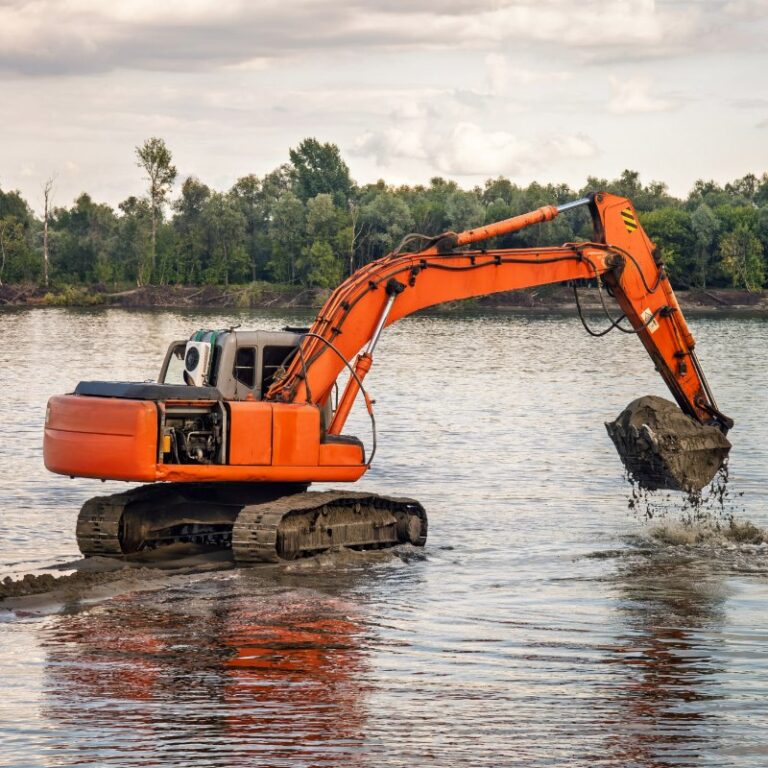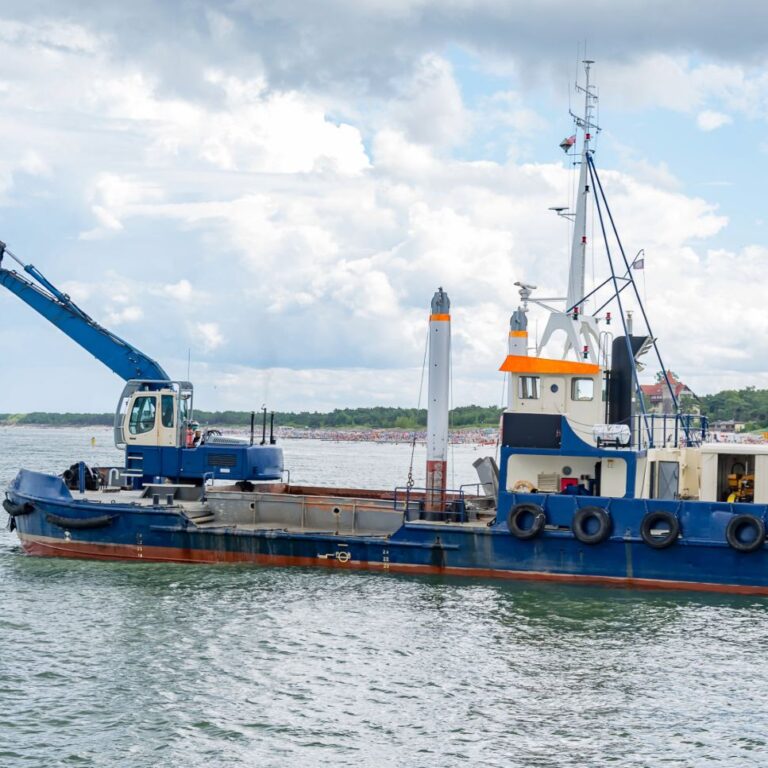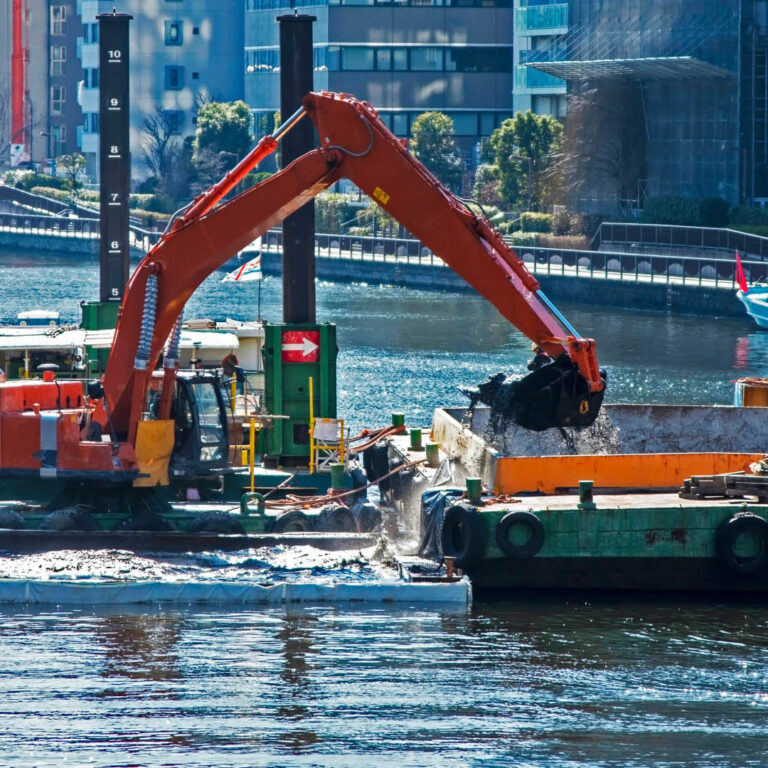Dredging Harbor: Techniques, Challenges, and Modern Solutions
Harbors are vital to global trade, transportation, and economic growth. As essential hubs for shipping and maritime activities, they facilitate the movement of goods, services, and people, directly supporting local economies and international commerce. However, maintaining these critical infrastructure assets requires constant attention, as sediment accumulation and natural erosion can reduce navigability, limit capacity, and threaten their functionality.
Dredging harbor areas is crucial for ensuring these water bodies remain operational and safe. By removing sediment and debris from the harbor floor, dredging maintains adequate depth for vessels, prevents flooding, and expands ports’ capacity to handle larger ships and cargo volumes. This process is vital for maintaining existing harbors and supporting the development of new ones to meet growing global demands.
This blog will explore key aspects of harbor dredging, exploring techniques, challenges, and innovative solutions used to dredge harbor areas effectively. We will discuss how modern technology and sustainable practices are reshaping the dredging process while addressing environmental and logistical challenges. Whether you’re interested in understanding the complexities of dredging or its importance to economic and environmental sustainability, this blog will provide valuable insights into the evolving practices of harbor dredging.
What is Harbor Dredging?
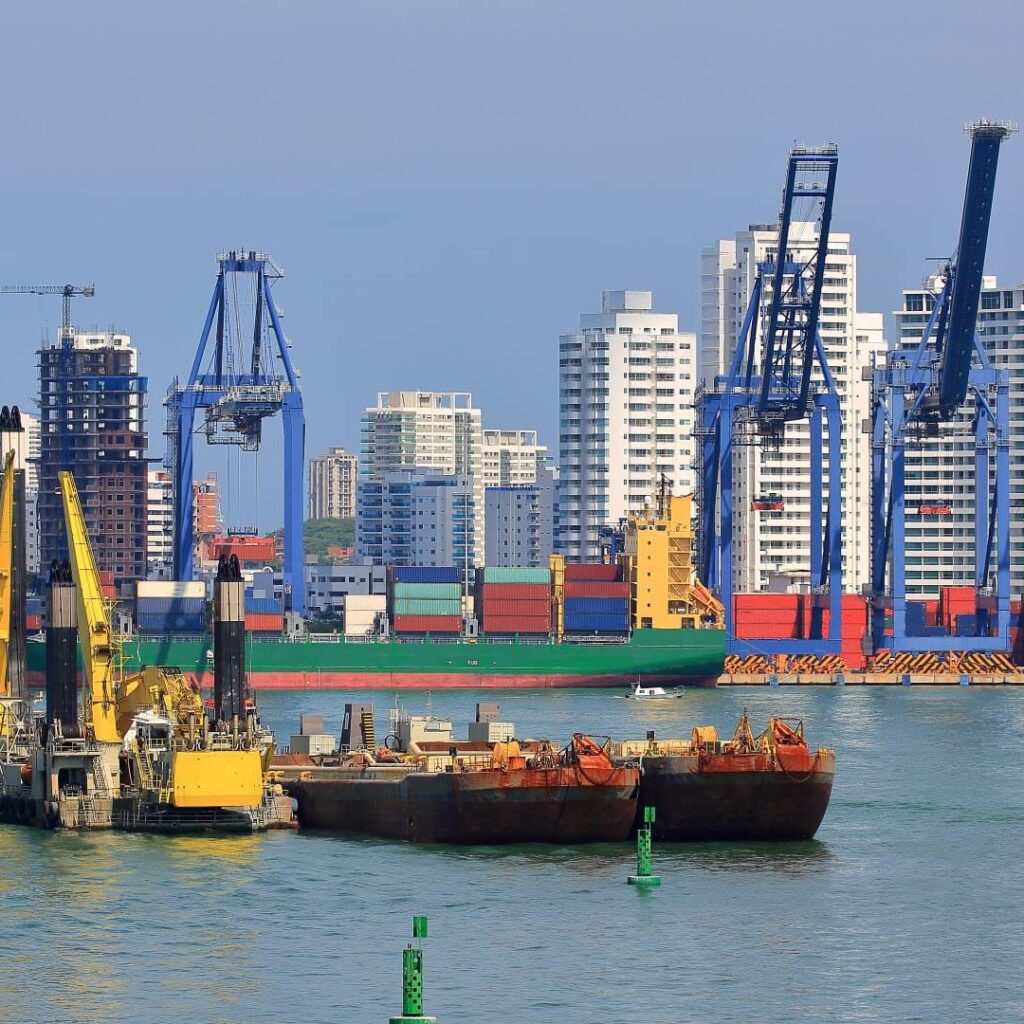
Harbor dredging is the process of removing sediment, debris, and other materials that accumulate on the seafloor within harbors, ports, and waterways. Over time, natural sedimentation, erosion, and human activities can lead to the buildup of material, reducing the depth of harbors and threatening their functionality. The primary goal of dredging harbor areas is to maintain or restore adequate navigational depths to ensure the safe and efficient passage of vessels.
One of the key objectives of harbor dredging is to support maritime trade and transportation. Harbors are critical to global commerce, serving as gateways for goods and commodities. Regular dredging harbor operations help accommodate larger cargo ships and ensure uninterrupted operations. Additionally, harbors that support tourism, such as those used for cruise ships or recreational boating, also depend on clear and navigable waterways to attract visitors.
Beyond navigation, harbor dredging contributes to coastal safety by preventing sediment buildup that can obstruct water flow and exacerbate flooding risks. It also plays a vital role in expanding harbor capacity, allowing ports to grow and meet increasing global demands.
Advanced techniques and specialized equipment are used to effectively dredge harbor areas, removing sediments while minimizing environmental impact. This ensures the sustainability of dredging operations, balancing economic benefits with ecological preservation.
In summary, dredging harbor areas is essential for maintaining trade, tourism, and safety. Without regular maintenance, harbors would face operational challenges, economic losses, and environmental risks. This process ensures that harbors remain functional, efficient, and capable of meeting the demands of modern maritime activities.
Techniques for Dredging Harbors
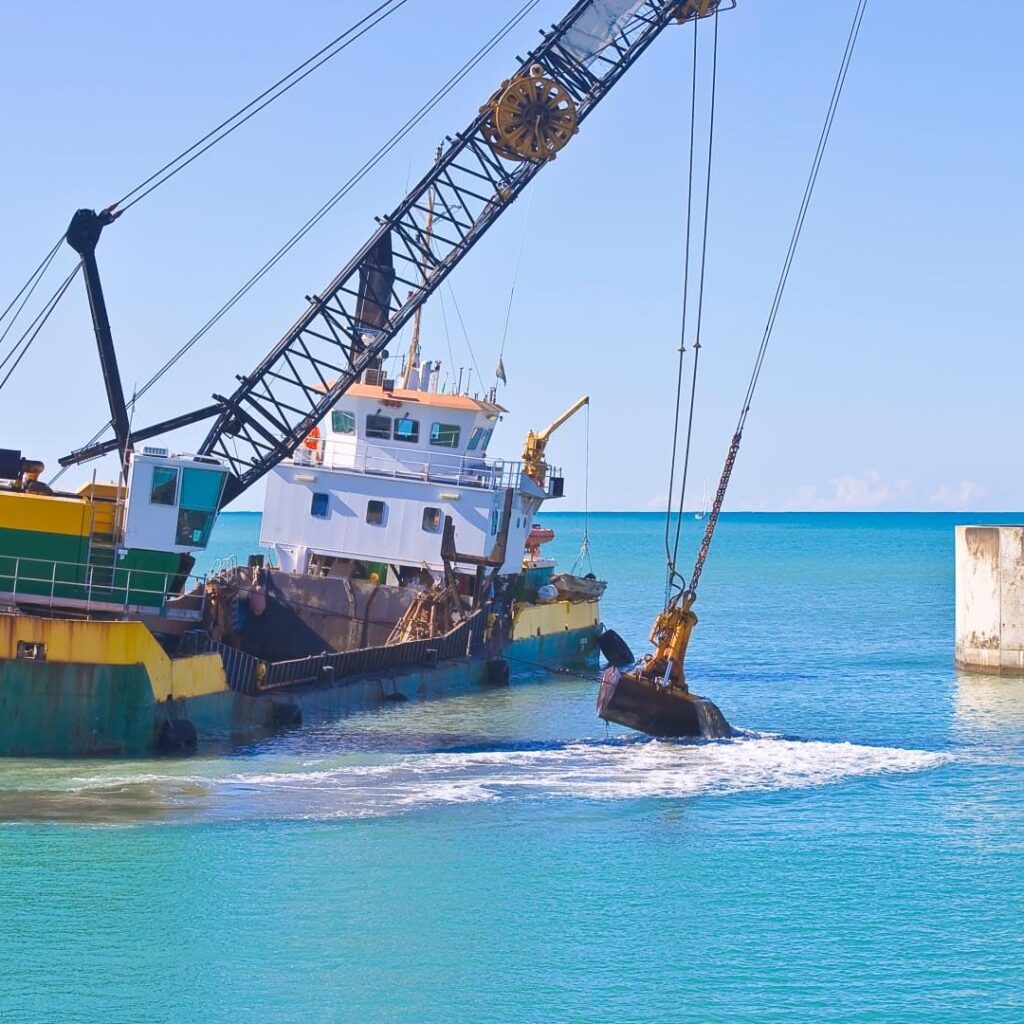
Dredging harbor areas requires various techniques tailored to each project’s unique conditions and objectives. The appropriate method depends on factors such as sediment type, water depth, and the specific goals of the dredging operation. Below are the most commonly used techniques.
1. Mechanical Dredging
Mechanical dredging is a traditional approach that involves scooping sediment from the harbor floor using clamshells, draglines, and excavators. This method is particularly effective for removing compacted or coarse materials like gravel and clay. While slower than hydraulic methods, mechanical dredging is reliable for precision excavation in confined areas or shallow waters.
2. Hydraulic Dredging
Hydraulic dredging is a more efficient method for removing large volumes of sediment, making it a preferred technique for large-scale dredging harbor projects. Suction dredgers and cutter suction dredgers are commonly used to transport sediment through pipelines to disposal sites. This method is ideal for fine materials like silt and sand, ensuring continuous sediment removal with minimal disruption.
3. Specialized Techniques
Specialized approaches, such as trailing suction hopper dredging, are used for projects requiring mobility and efficiency. Environmental dredging, on the other hand, is designed to minimize ecological impact by carefully removing contaminated sediments. Backhoe dredging is often employed for hard-to-reach areas or when precision is necessary.
Selecting the right harbor dredging technique is crucial for achieving project objectives efficiently and sustainably. By understanding site-specific conditions and leveraging the right methods, operators can effectively dredge harbor areas, ensuring long-term functionality and safety in maritime operations. Dredging harbor projects, when executed with the right techniques, contribute to both economic growth and environmental preservation.
Challenges in Dredging Harbors

Dredging harbor areas is a complex process that presents a range of challenges. These challenges span environmental, technical, logistical, and regulatory dimensions and require careful planning and execution to ensure success.
Environmental Challenges
One of the primary concerns in dredging harbor areas is the impact on marine ecosystems. Sediment removal can disturb marine life, disrupt habitats, and affect biodiversity. Additionally, the resuspension of fine sediments during dredging operations can degrade water quality, impacting nearby aquatic environments. Harbor dredging must also manage the disposal of dredged material responsibly, particularly if contaminated sediments are involved.
Technical Challenges
Hard sediments, underwater obstructions, and confined spaces pose significant technical challenges. Dredging harbor areas often requires specialized equipment and techniques to overcome these obstacles. For example, working in shallow or narrow harbor zones may require backhoe dredgers, while hard substrates may necessitate powerful cutter suction dredgers. These complexities make it crucial to select the right methods and equipment to dredge harbor environments efficiently.
Logistical and Economic Challenges
Dredging projects can be expensive, with costs driven by equipment requirements, sediment disposal, and project timelines. The availability of equipment and skilled operators also adds logistical constraints. Furthermore, balancing the need for continuous operations with minimal disruptions to port activities adds an extra layer of complexity to harbor dredging efforts.
Balancing Needs and Compliance
Dredging harbor operations must comply with environmental regulations and address community concerns. Striking a balance between operational needs and sustainability is essential for success. By employing innovative techniques and sustainable practices, stakeholders can effectively dredge harbor areas while mitigating challenges and maintaining regulatory compliance. Through careful planning, harbor dredging can achieve its objectives while minimizing its impact.
Modern Solutions for Harbor Dredging

The evolution of technology has introduced modern solutions to improve efficiency, precision, and sustainability in dredging harbor operations. These advancements address environmental, technical, and logistical challenges while ensuring long-term functionality and safety.
Automation and Remote-Controlled Dredgers
Automation has revolutionized harbor dredging by enabling remote-controlled dredgers to operate with high precision. These systems reduce human error and improve safety while optimizing sediment removal processes. Automated dredgers are particularly beneficial in challenging environments, allowing operators to manage harbor activities effectively even in confined or hazardous spaces.
Eco-Friendly Dredging Techniques
Modern harbor dredging practices focus on eco-friendly methods to minimize environmental impact. Techniques such as environmental dredging carefully remove contaminated sediments while reducing sediment resuspension. Silt curtains and other containment strategies prevent debris and pollutants from spreading to surrounding ecosystems. These innovations help dredge harbor areas with minimal disruption to marine biodiversity and water quality.
Advanced Equipment for Precise Sediment Removal
Specialized equipment, such as cutter suction dredgers and trailing suction hopper dredgers, ensures precise sediment removal tailored to each project’s specific needs. These advanced tools allow operators to efficiently dredge harbor zones with varying sediment types, depths, and operational constraints.
Real-Time Monitoring Systems
Real-time monitoring systems are critical to optimizing dredging harbor efficiency. By tracking sediment removal rates, water quality, and equipment performance, these systems enable proactive adjustments that reduce environmental disruption and improve overall project outcomes.
Harbor dredging has become more efficient, sustainable, and adaptable by leveraging these modern solutions. These innovations ensure that harbor operations meet operational and environmental goals, supporting the long-term health of harbors and their surrounding ecosystems.
Environmental Considerations in Harbor Dredging
Dredging harbor operations must balance the need for maintaining navigability with the protection of marine ecosystems and surrounding environments. Without proper precautions, sediment removal can negatively impact water quality, aquatic habitats, and biodiversity. Implementing environmentally conscious strategies ensures that dredging harbor projects contribute to both operational and ecological sustainability.
Use of Silt Curtains
Silt curtains are one of the most effective tools for minimizing sediment dispersion during dredging. These barriers contain disturbed sediments within the dredging area, preventing them from spreading and affecting water quality or sensitive ecosystems. Using silt curtains ensures that projects can dredge harbor zones with minimal environmental disruption.
Eco-Friendly Dredging Methods
Eco-friendly dredging techniques focus on reducing harm to marine life and ecosystems. For example, precision dredging reduces unnecessary sediment removal, while specialized equipment such as environmental dredgers minimizes disturbances to habitats. These methods ensure that harbor dredging operations protect the surrounding environment while achieving their objectives.
Environmental Impact Assessments
Conducting environmental impact assessments (EIAs) is crucial before beginning any dredging harbor project. EIAs identify potential risks to ecosystems and recommend strategies to mitigate them, ensuring that projects comply with environmental regulations and community expectations.
Long-Term Benefits of Sustainable Practices
Adopting sustainable harbor dredging practices offers long-term advantages for both ecosystems and communities. Cleaner harbors promote biodiversity, improve water quality, and ensure safe conditions for aquatic life and human activities.
Role of Technology
Innovative technologies, such as real-time monitoring systems and precision dredging equipment, further enhance the sustainability of dredge harbor operations. By employing these tools and best practices, harbor dredging can achieve a balance between operational goals and environmental stewardship, ensuring sustainable outcomes for years to come.
Regulatory Framework for Harbor Dredging
Dredging harbor operations are subject to strict international and local regulations designed to protect the environment, ensure safe navigation, and support sustainable development. Compliance with these regulations is essential for the success of any dredging project, as it ensures that environmental and legal requirements are met.
International and Local Regulations
At the international level, organizations like the International Maritime Organization (IMO) and conventions like the London Convention govern the disposal of dredged material and regulate dredging practices. Locally, countries have their laws and guidelines for harbor dredging, including restrictions on sediment disposal and protections for marine ecosystems. These frameworks ensure that harbor dredging activities are conducted responsibly.
Permits and Environmental Assessments
Obtaining permits is a critical step before beginning any dredging harbor project. Permitting often requires detailed environmental impact assessments (EIAs) to evaluate potential risks to ecosystems and communities. These assessments identify strategies to mitigate negative impacts, such as sediment dispersion or habitat disruption, ensuring that projects to dredge harbor areas align with regulatory standards.
Collaboration for Best Practices
Governments, environmental agencies, and industry stakeholders collaborate to develop best practices for sustainable harbor dredging. This includes promoting eco-friendly techniques, such as precision dredging and sediment recycling, which minimize environmental disruption while achieving operational goals.
Role of Compliance
Compliance with regulations plays a key role in ensuring the safety and effectiveness of dredging harbor projects. Adhering to these standards reduces the risk of legal penalties, environmental damage, and community opposition. By aligning projects with regulatory frameworks, stakeholders can successfully dredge harbor areas in a manner that is both sustainable and beneficial to the environment. Through proper planning and collaboration, harbor dredging can meet the needs of industry while protecting vital ecosystems.
Conclusion
Harbor dredging is a vital process for maintaining the functionality, safety, and economic viability of harbors worldwide. As harbors serve as critical hubs for trade, transportation, and tourism, dredging harbor areas ensures that they remain navigable and capable of accommodating larger vessels and increasing traffic. Regular dredging operations also contribute to coastal safety by preventing sediment buildup and reducing flood risks.
Modern solutions, such as automation, eco-friendly techniques, and real-time monitoring, are transforming the approach to dredging harbor projects. These advancements enhance efficiency and address environmental concerns, ensuring minimal disruption to marine ecosystems. By integrating these technologies and sustainable practices, stakeholders can overcome the challenges of sediment removal, environmental impact, and logistical constraints.
To achieve long-term sustainability, a balanced approach that considers operational goals and environmental stewardship is essential. Stakeholders, including governments, industries, and communities, must prioritize sustainable practices and invest in advanced techniques to effectively dredge harbor areas.
In conclusion, harbor dredging plays a critical role in supporting global commerce, environmental health, and community safety. By embracing innovation and sustainability, we can ensure that dredging harbor operations continue to meet the demands of modern maritime industries while preserving the delicate balance of our ecosystems.



